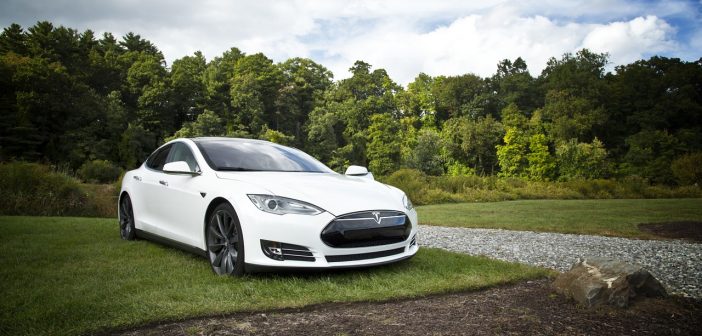It’s long been a vision that our future would include flying cars. While that may someday be a reality, it’s not today. But something that is possible? Truly autonomous, self-driving vehicles. Given the way AI is starting to take over the world, it might well be a reality soon. But even though the technology exists — and many of us have heard tales and seen demos of self-driving cars — it’s difficult to imagine our roadways filled with them. Driverless vehicles are still, in essence, a new concept for us as a society. Not only are they scarce in the wild, but we’re still working out the regulatory kinks and legal ramifications of their existence.
When a driverless vehicle is involved in an accident or causes damage — property or personal — who is legally at fault? Is it the owner, who wasn’t even in control? The manufacturer of said vehicle? Or is it the vendor or service provider in control of the vehicle’s autonomy database and system? We have a long way to go on that front, at least until we can call out the finer details.
According to Intel, driverless vehicle technology will contribute $7 trillion to the global economy over the next few decades and will also save thousands — if not millions — of lives. Despite this growing rise in adoption, however, public sentiment is still a bit fuzzy. The hardware that makes these vehicles possible or operational, for example, is not what you might think. Ask anyone, and they’d likely describe robotic-like controls connected to a larger chassis or a track-based system where all the vehicles run on a theme-park style roadway.
In reality, it’s data that will power the driverless vehicles of the future. Yes, digital data or information collected by a variety of sensors and monitoring systems and then passed through a big data platform — namely one connected to AI or machine learning. It sounds a bit insane, especially when you consider that “data” or digital content is not exactly tangible in nature. How can a seemingly invisible or untouchable element have control over something so advanced as a driverless vehicle, and by proxy our lives?
The Relationship Between Self-Driving Vehicles and Data
To put it bluntly, driverless vehicles would not exist without their connected data. They just wouldn’t be possible. The reason is that all the real-world, situational and contextual information must be collected, processed and then deployed for an automated system to carry out its work. A driverless vehicle must remain aware of other vehicles on the road, nearby pedestrians and objects, where it’s going and how that relates to its current position.
A variety of sensors and devices collect the necessary information, transfer it through an open connection to a hub or main system and then receive it after it’s been collated and processed. That central system — often powered by AI or machine learning algorithms — is what turns the digital data into usable insights.
More importantly, this process must be done so fast that the vehicle’s control unit has time to send and receive the related information before it even makes its split-second decision. It must be able to tell if an object is rolling out in front of it — less than a mile away — is a ball or a child. Furthermore, it must also be able to discern if it has ample time to stop, must swerve out of the way or should just keep going.
That also means the system is responsible for many lives in even a simple situation. It’s responsible for keeping the passengers inside the vehicle safe, but it also covers anyone in the surrounding area — such as the child who lost their ball.
Data drives it all, even if it’s tough to grasp at times.
How Self-Driving Vehicles Utilize Data
The data processed and used by driverless vehicles can be both vital and inconsequential in regards to general importance. Knowing its environmental and situational surroundings, for example, can be the difference between a major accident and reliable operation. But data about its passengers can make a difference too, just not in the same way. The latter could factor in when adjusting temperature control settings inside the vehicle, entertainment devices or even dynamic accessories like an electronic window tint system.
The situational information is vital to the car’s journey and main operations. Data collected about nearby landmarks, roadways or structures can be used to discern its current location. This process would allow it to pinpoint a position geographically with precise specifications when combined with modern GPS information.
Geographic information systems are used in many ways in the industry. They can help plan routes and identify shortcuts or avoid traffic. They can also sync information to remote servers, which could relate it to other nearby vehicles on the same roadway. An accident that just occurred, minutes ahead, could be relayed to a vehicle nearby, allowing it to stop or slow as necessary. Furthermore, a sonar-like sensor would enable the vehicle to see, gauge and measure surroundings at all times.
Speed, hardware and performance and external body information allow vehicle systems to see their current condition, which could become even more important when dealing with environmental issues. Avoiding flooded roadways, for example, would require the vehicle to constantly measure water levels touching the chassis and identify whether or not the pooled water is shallow enough to cross.
The data is also being used to prepare both the vehicles and our roadways for their arrival.
Operational Testing and Deployment Data
Before these vehicles can be unleashed, we need to be prepared as a society, and the manufacturers must be positive that they work as intended. That assurance requires lots and lots of testing, both in real cities and on real roads.
All the data being collected is also being fed into testing and deployment to help optimize the systems and hardware used. Sensors that may have a blind spot, for instance, must be retooled or augmented with additional devices to fix vulnerabilities. The only way you’d know such a sensor or device isn’t measuring accurately on real roads is to test it out.
Google’s self-driving vehicles create and process up to two Petabytes of data per year, which is around two million Gigabytes. That’s a lot of data. Some of it is technical and local — such as what the car is doing in various circumstances — while there’s also community or external data and even personal data about the passengers within.
The more important distinction to make, however, is that these vehicles and systems never stop collecting, processing or using data until they’re turned off and parked. Even then, the data is still being used to make the systems more powerful, more accurate and safer.
With enough data, you can start to deploy predictive systems that make correct decisions based on fact. That ball has rolled out onto the street, so it’s likely that a child or pedestrian will follow soon after. Come to a complete stop as soon as possible, and swerve if you cannot. Intel CEO Brian Krzanich put it best. “Data is the new oil.” It will fuel the vehicles of the future and make them smarter, more aware and more efficient than ever before.
Enter Privacy and Security
With all that data being collected and flowing freely between systems, open connections and being deployed, there are some concerns regarding privacy and security.
For starters, how can we prevent hackers from gaining access to the data control systems and wreaking havoc? What if you’re on a highway, and the vehicle is shut-down by an external party? That issue could lead to some severe and fatal accidents, with repercussions for not only you and fellow passengers but also those on the same road.
Privacy is another concern. If the vehicle is constantly collecting and reporting information about the drivers and passengers, what does it see? It could directly influence roadway signage and billboards, for instance. Imagine a dynamic system that picks up products or goods you’re discussing and then displays them on nearby signs for an extra advertising boost — similar to how Amazon and other retailers suggest products using your internet browsing history.
Unfortunately, as crucial as these elements are, it will take time to work out kinks with the technology. We’ll also need to be wary of how our personal data and privacy are handled in regard to the companies building these vehicles. We must find a way to protect ourselves, even from helpful and necessary systems like the ones powering driverless vehicles. Time, research, awareness and proper regulation are some of the better solutions, but it won’t happen overnight.







